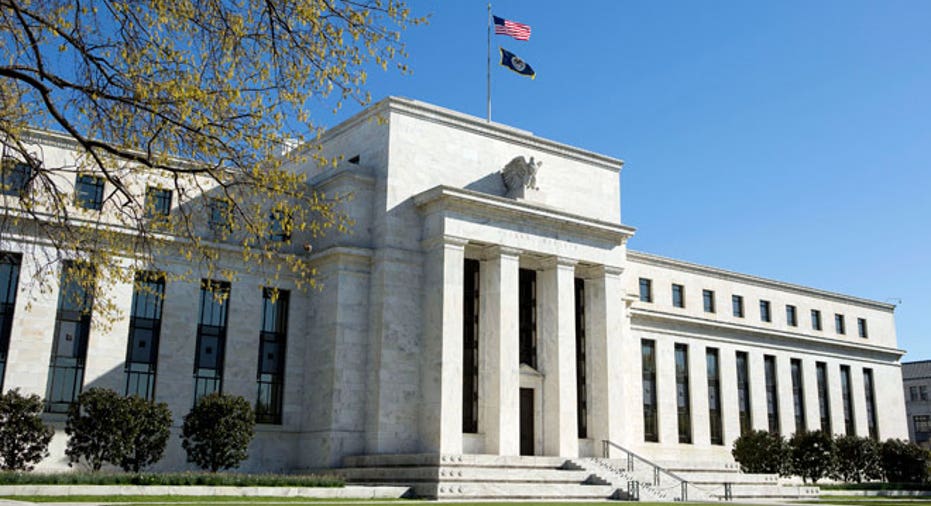Fed Keeps Rates on Hold as Members Become More Divided

Voting to keep short-term interest rates unchanged, the Federal Reserve on Wednesday decided this month will not be a September for Wall Street to remember.
At the conclusion of its two-day policy-setting meeting, the central bank’s Federal Open Market Committee voted for no change in interest rates despite months of calls from some on the Street to raise rates from a 0.25% - 0.50% range. The Fed cited low inflation thanks in part to declines in energy prices and “soft” business fixed investment as the chief reasons for its decision, but left the door more clearly open for a rate rise before the end of the year.
“The committee judges that the case for an increase in the federal funds rate has strengthened but decided, for the time being, to wait for further evidence of continued progress toward its objectives,” the statement read.
Three members – Kansas City Fed President Esther George, Cleveland Fed President Loretta Mester, and Boston Fed Chief Eric Rosengren – dissented from the seven other FOMC participants who voted to keep rates unchanged this month. It was the first time since December 2014 three members have dissented from a decision. On the other side of the spectrum, three participants now see the possibility of no rate increases this year – at the July meeting, no members held that viewpoint.
Still in a press conference following the conclusion of the meeting, Fed Chief Janet Yellen reassured markets that the move to keep rates on hold “does not reflect a lack of confidence in the economy,” and was due to slow uptake of labor-market slack and inflation below the 2% target.
In the Summary of Economic Projections, released in tandem with the policy statement, Fed members see one rate hike before the end of this year, while the number of expected rate rises in 2017 moved to two hikes from three after the June meeting. The Fed has kept rates on hold at every meeting since last December when it said it anticipated at least four hikes through the course of 2016. However, those plans were shelved due to a range of economic events including worries about global growth in the beginning of the year, and the United Kingdom’s June decision to exit the European Union.
"We can safely say there’s not group think on the FOMC and we should all be very happy about that. In fact, we should encourage more of it."
Still, adding to the uncertainty about the September decision ahead of the two-day meeting, in the weeks leading up to the decision, George, Rosengren, Richmond Fed President Jeffrey Lacker, and New York Fed President William Dudley, hinted a rate hike would be very much in play in September.
Text from those speeches, combined with the dissenting members’ opinions, show members appearing to be more split than ever on how the central bank should move forward with changes in monetary policy. But the fact there is a lively discussion among voting members should be reassuring, KPMG Chief Economist Constance Hunter said.
“It’s completely reasonable for there to be dissent and I think group think leads to way more problems than it solves. We can safely say there’s not group think on the FOMC and we should all be very happy about that. In fact, we should encourage more of it,” she said.
Pointing to a line in the statement explaining the fed funds rate likely to remain low “for some time,” Hunter said Wednesday’s statement signals the central bank is preparing for a rate rise by the December 14, 15 meeting – but future rate increases will be slow and steady.
“They don’t want to be accused of bursting a bubble or being unprepared, choking off the recovery too soon…the Fed doesn’t want to go down the negative-rate path and it wants to normalize in a slow, gradual way when the economy is ready,” she said.
To that point, Glenmede’s Casey Clark, vice president of investment strategy, pointed out the “dots” in the so-called dot plot that indicate FOMC participants’ views of appropriate monetary policy, showed a slower pace of tightening. In addition, the Fed lowered its U.S. economic-growth outlook to 1.8% in 2016 from a 2% estimate in June. By 2018, the Fed sees a continued slow-growth environment with an annualized growth rate of 2%. The reason for that shift, Yellen said, is slow productivity growth that influences longer-run interest rates.
“The Fed’s message today is consistent with the recent softening of economic data including retail sales growth, industrial production, and the New York Fed’s Empire State Index,” Clark said.
With federal funds futures, a tool used to predict market expectation for changes in monetary policy, showing a near 60% chance of a rate rise in December, at this point, the biggest thing that could prevent the Fed from moving forward would be an unexpected shock to financial stability, said Mike Bailey, director of research at FBB Capital Partners. “The stars are lining up to match everything the Fed is looking for,” he said.



















